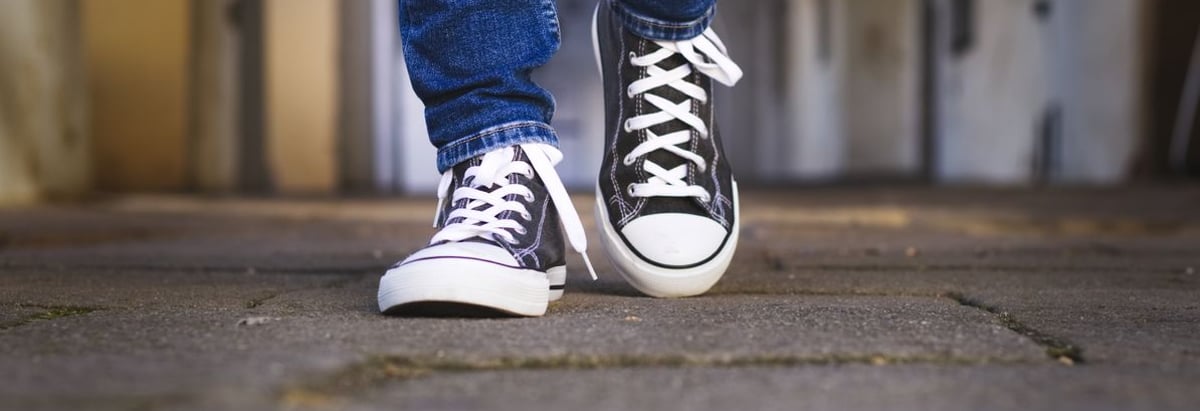Here's Why Relaxo Footwears (NSE:RELAXO) Can Manage Its Debt Responsibly

Warren Buffett famously said, 'Volatility is far from synonymous with risk.' So it seems the smart money knows that debt - which is usually involved in bankruptcies - is a very important factor, when you assess how risky a company is. We can see that Relaxo Footwears Limited (NSE:RELAXO) does use debt in its business. But the more important question is: how much risk is that debt creating?
When Is Debt Dangerous?
Debt is a tool to help businesses grow, but if a business is incapable of paying off its lenders, then it exists at their mercy. In the worst case scenario, a company can go bankrupt if it cannot pay its creditors. However, a more common (but still painful) scenario is that it has to raise new equity capital at a low price, thus permanently diluting shareholders. Of course, the upside of debt is that it often represents cheap capital, especially when it replaces dilution in a company with the ability to reinvest at high rates of return. The first thing to do when considering how much debt a business uses is to look at its cash and debt together.
See our latest analysis for Relaxo Footwears
What Is Relaxo Footwears's Net Debt?
As you can see below, Relaxo Footwears had ₹1.38b of debt at September 2021, down from ₹1.82b a year prior. But it also has ₹2.16b in cash to offset that, meaning it has ₹781.0m net cash.

How Healthy Is Relaxo Footwears' Balance Sheet?
According to the last reported balance sheet, Relaxo Footwears had liabilities of ₹4.81b due within 12 months, and liabilities of ₹1.45b due beyond 12 months. On the other hand, it had cash of ₹2.16b and ₹1.93b worth of receivables due within a year. So it has liabilities totalling ₹2.17b more than its cash and near-term receivables, combined.
Having regard to Relaxo Footwears' size, it seems that its liquid assets are well balanced with its total liabilities. So while it's hard to imagine that the ₹289.9b company is struggling for cash, we still think it's worth monitoring its balance sheet. Despite its noteworthy liabilities, Relaxo Footwears boasts net cash, so it's fair to say it does not have a heavy debt load!
And we also note warmly that Relaxo Footwears grew its EBIT by 12% last year, making its debt load easier to handle. The balance sheet is clearly the area to focus on when you are analysing debt. But you can't view debt in total isolation; since Relaxo Footwears will need earnings to service that debt. So if you're keen to discover more about its earnings, it might be worth checking out this graph of its long term earnings trend.
But our final consideration is also important, because a company cannot pay debt with paper profits; it needs cold hard cash. While Relaxo Footwears has net cash on its balance sheet, it's still worth taking a look at its ability to convert earnings before interest and tax (EBIT) to free cash flow, to help us understand how quickly it is building (or eroding) that cash balance. Over the most recent three years, Relaxo Footwears recorded free cash flow worth 59% of its EBIT, which is around normal, given free cash flow excludes interest and tax. This cold hard cash means it can reduce its debt when it wants to.
Summing up
While it is always sensible to look at a company's total liabilities, it is very reassuring that Relaxo Footwears has ₹781.0m in net cash. So we don't think Relaxo Footwears's use of debt is risky. Of course, we wouldn't say no to the extra confidence that we'd gain if we knew that Relaxo Footwears insiders have been buying shares: if you're on the same wavelength, you can find out if insiders are buying by clicking this link.
If, after all that, you're more interested in a fast growing company with a rock-solid balance sheet, then check out our list of net cash growth stocks without delay.
New: AI Stock Screener & Alerts
Our new AI Stock Screener scans the market every day to uncover opportunities.
• Dividend Powerhouses (3%+ Yield)
• Undervalued Small Caps with Insider Buying
• High growth Tech and AI Companies
Or build your own from over 50 metrics.
Have feedback on this article? Concerned about the content? Get in touch with us directly. Alternatively, email editorial-team (at) simplywallst.com.
This article by Simply Wall St is general in nature. We provide commentary based on historical data and analyst forecasts only using an unbiased methodology and our articles are not intended to be financial advice. It does not constitute a recommendation to buy or sell any stock, and does not take account of your objectives, or your financial situation. We aim to bring you long-term focused analysis driven by fundamental data. Note that our analysis may not factor in the latest price-sensitive company announcements or qualitative material. Simply Wall St has no position in any stocks mentioned.
About NSEI:RELAXO
Relaxo Footwears
Engages in the manufacture and sale of footwear for men, women, and kids in India and internationally.
Flawless balance sheet established dividend payer.
Similar Companies
Market Insights
Community Narratives



